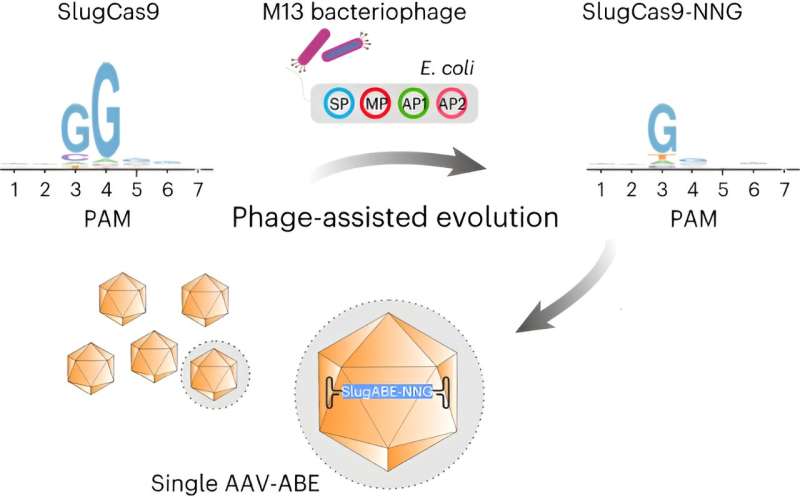New enzyme allows CRISPR technologies to accurately target almost all human genes
Originally published by Michaela Kane, Duke University, on December 5, 2023
Credit: Nature Chemical Biology (2023). DOI: 10.1038/s41589-023-01481-5
A team of engineers at Duke University have developed a method to broaden the reach of CRISPR technologies. While the original CRISPR system could only target 12.5% of the human genome, the new method expands access to nearly every gene to potentially target and treat a broader range of diseases through genome engineering.
The research involved collaborators at Harvard University, Massachusetts Institute of Technology, University of Massachusetts Medical School, University of Zurich and McMaster University.
This work was published on October 4 in the journal Nature Communications.
CRISPR-Cas is a bacterial immune system that allows bacteria to use RNA molecules and CRISPR-associated (Cas) proteins to target and destroy the DNA of invading viruses. Since its discovery, researchers have raced to develop an arsenal of new CRISPR systems for applications in gene therapy and genome engineering.
To make edits to the genome, Cas proteins utilize both an RNA molecule, which guides the enzyme to a targeted stretch of DNA, and a protospacer adjacent motif, or PAM, which is a short DNA sequence that immediately follows the targeted DNA sequence and is required for the Cas protein to bind.
Once a guide RNA finds its complementary DNA sequence and the Cas enzyme binds the adjacent PAM, the enzyme acts like scissors to make a cut in the DNA, triggering the desired changes to the genome. The most common CRISPR-Cas system is the Cas9 from Streptococcus pyogenes bacteria (SpCas9), which requires a PAM sequence of two guanine bases (GG) in a row.
In previous work, Chatterjee and his team used bioinformatics tools to discover and engineer new Cas9 proteins, including Sc++, which only requires a single guanine base PAM to make a cut. This change made it possible for researchers to edit nearly 50% of all DNA sequences.
At the same time, Chatterjee's collaborators at Harvard, led by Benjamin Kleinstiver, an assistant professor at Harvard Medical School, engineered a separate variant called SpRY. While SpRY could bind to any one of the four DNA bases that could form the PAM, it had a much stronger affinity for adenine and guanine.



Comments
Post a Comment